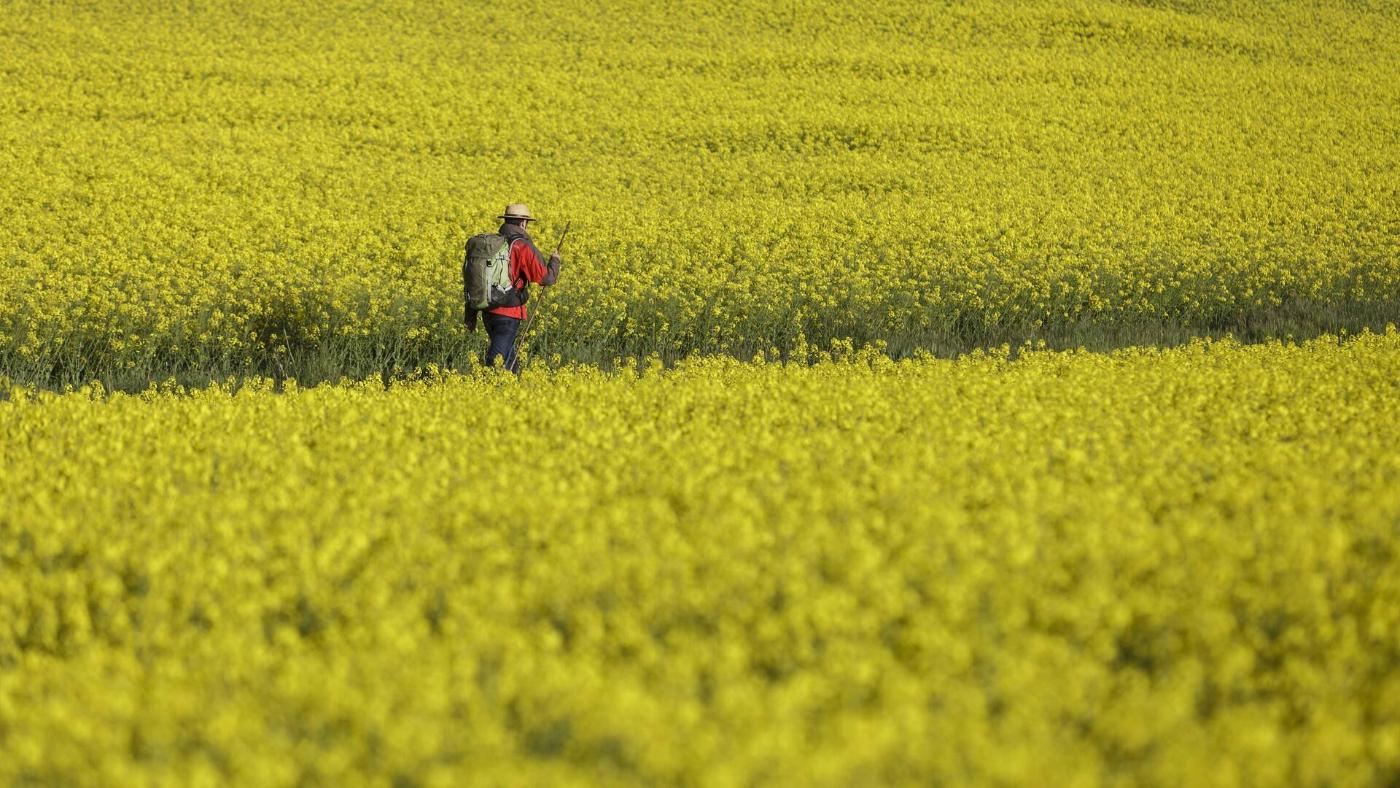
Are you looking for a truly inspirational holiday?
Come to Navarra, in the north of Spain, and take your initiation on the “Camino de Santiago French Way”. This thousand-year-old route, covered by thousands of pilgrims every year, is known as the Main Street of Europe, and has been declared a UNESCO World Heritage route. In 2025 it was given an additional acknowledgement: the Starlight Destination seal, which recognises the quality of its night skies. This route will surprise you both during the daytime and at night. This spring, start your Camino de Santiago in Navarra and do it with a premium holiday offer.
If you like history, art, walking through nature and enjoying spectacular food, few places in the world have so much to offer. So, are you coming?
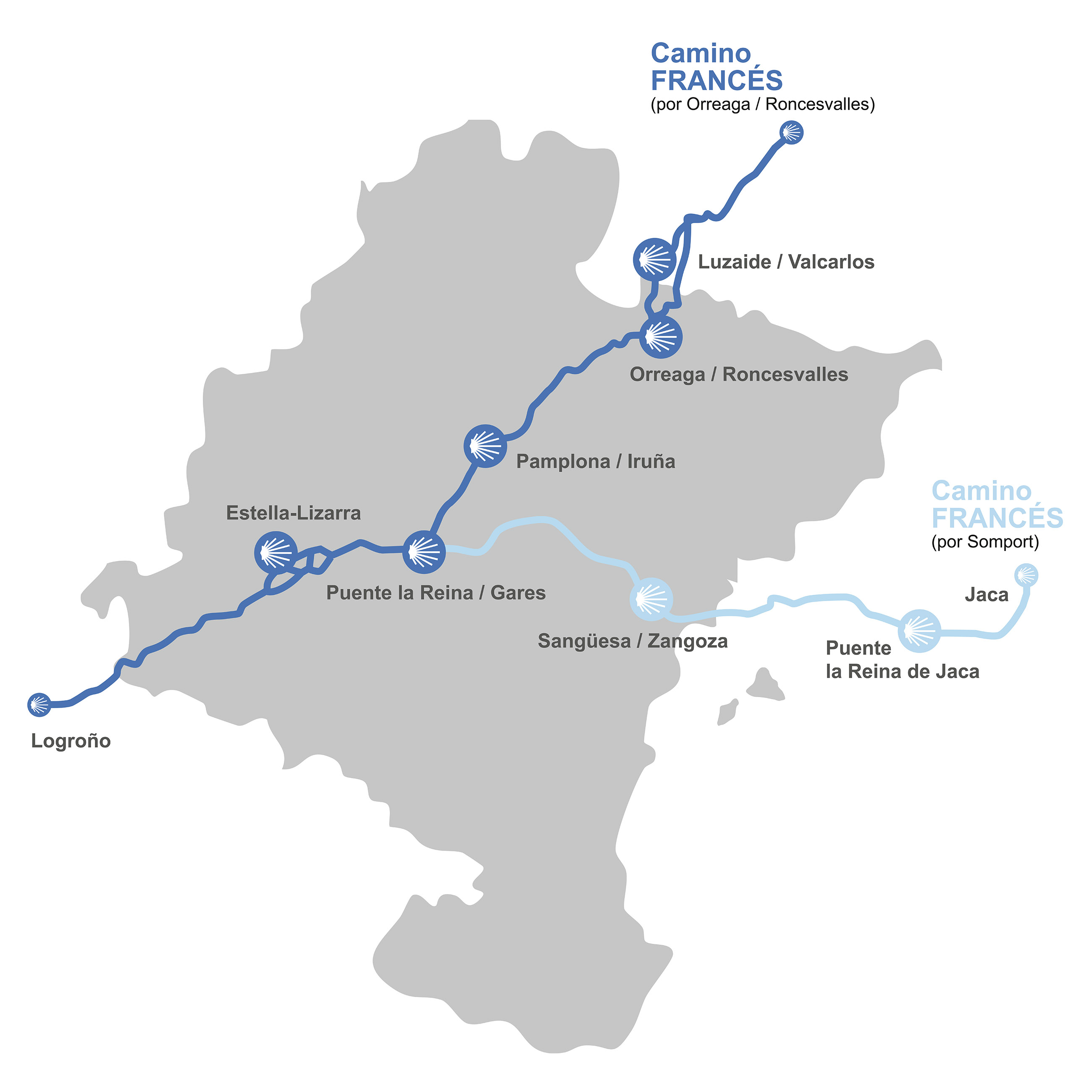
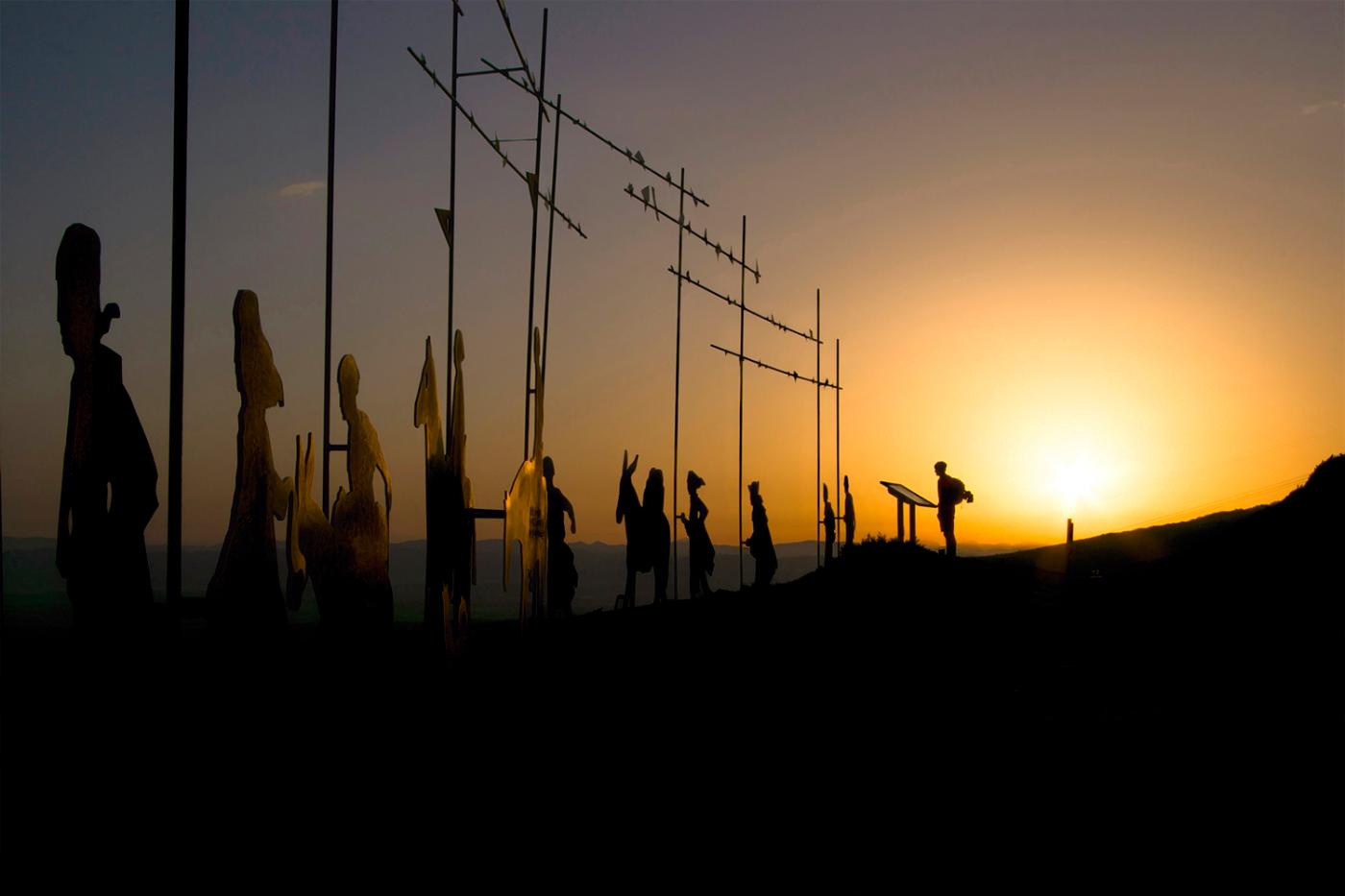
What is the Camino de Santiago?
The Camino de Santiago is a pilgrimage route that came into being after the discovery of the tomb of the apostle Saint James in Spain, back in the year 830. The paths that lead to this destination are many, but the one known as the French Way is, without out a doubt, the most popular.
Over the centuries this route has gradually filled up with churches, hospitals, cathedrals and hostels to aid pilgrims and give them shelter. Today, the endless stream of people who decide to travel the more than 700 kilometres of the route between Roncesvalles (Navarra) and Santiago de Compostela (Galicia) continues.
They do it on foot, on bicycle or even on horseback, for spiritual reasons or as a personal challenge, to seek their inner self or to get to know people who have come from all over the world.
If you prefer to organise your trip yourself, you need to keep in mind that it will take you 6 or 7 days to cover the Navarran stages of the Camino de Santiago French Way, or 2 or 3 days if you have decided to do it by bicycle. If you prefer to visit it by car, set aside 3 to 5 days to discover all the secrets of the route.
A tailored trip
We are offering you an initiatory tour. Discover the early stages of the Camino in Navarra. How? Visiting the monumental landmarks with the best guides, doing short sections to enjoy the natural areas and the authentic pilgrim experience, and enjoying the unique gastronomy of Navarra in its best restaurants and wineries.
If you are looking for a tailored trip, here are some of the specialised travel agencies in Navarra:
| Destino Navarra | Overtrails -Viajes Itsaslur | Northern Spain Travel | Incoming | CR Listen |
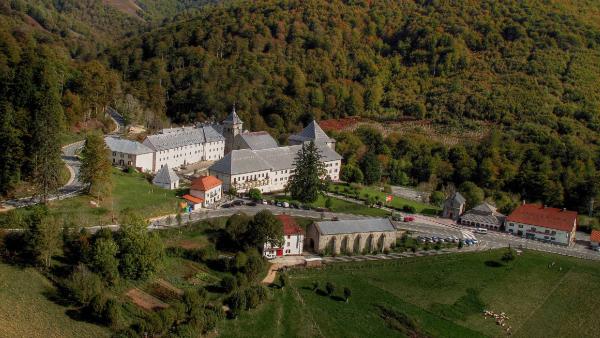
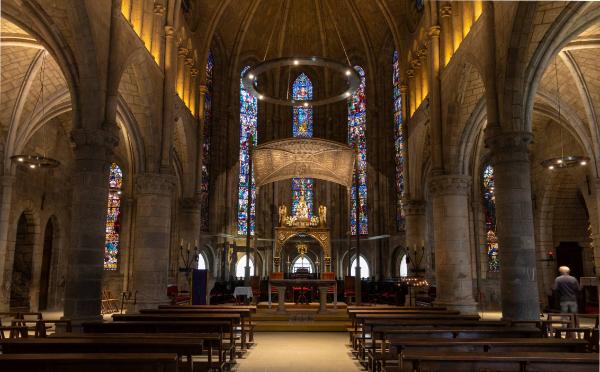
Stage 1 – Discovering Roncesvalles
In the heart of the Pyrenees, on the border between France and Spain, a mythical place lies hidden: Roncesvalles. Known as the gateway to the Camino, it is the chosen starting point for many pilgrims. In 2024 around 50,000 pilgrims of over a hundred nationalities passed through it.
It's worth devoting a day to discovering its secrets, and doing this with a professional guide. The elegant French Gothic Church of Santa María, is its crowning jewel. From its cloister, we reach the Saint Augustine's chapel, in which rests the giant king, Sancho VII the Strong. There you will find out how important Navarra was as a Medieval Christian kingdom, one in which the reconquest from the Muslims began. Don’t miss the little jewels in the museum's collection either.
Another historical feat linked to this place takes us back to the year 778 and concerns the battle in which the invincible Charlemagne saw his best knights, ‘the twelve peers’, including his most beloved, Roland, fall. A song of the time immortalised the deed throughout Europe, and its story is ever-present in Roncesvalles. You can see a monolith dedicated to the battle on the esplanade at the entrance; discover Charlemagne's silo, where the remains of those warriors are said to rest; and the statue representing the fallen Roland.
From here, the specialised agencies tend to offer two alternatives for doing a small section of the Camino: climbing up to Ibañeta pass to see Roncesvalles from up high, as the pilgrims arriving from France do, or starting the Camino southwards to reach the villages of Burguete or Espinal. This first section, very easy and pleasant, goes past some lovely places such as the witches oak grove and the pilgrim’s cross.
-
Our gastronomic offer: on the other side of the Erro pass in the Pamplona direction, is the only Navarran restaurant with two Michelin stars: El Molino de Urdániz. A gastronomic experience full of sensation and harmony.
Stage 2 – Pamplona, the first of the Camino
The most authentic way to enter Pamplona is from the Magdalena bridge, crossing the river Arga, which is just what the pilgrims do. We find ourselves at the foot of the walls surrounding Navarra’s capital city. We pass underneath the Portal de Francia and enter the historic centre of the city. If you visit the city with a guide, you will be able to discover all its secrets. The walled part of the city, the Gothic cathedral and its excellent Occidens museum (don't miss it), the Plaza del Castillo and the City Hall, its parks and gardens such as the Taconera and the Vuelta del Castillo with the beautiful Citadel, and all the various classic spots that will interest those who want to learn more about the Sanfermines, the internationally famous fiestas held in this city every July.
You will discover that Pamplona is a friendly, very green city, which stands out for its standard of living. All of which is also reflected in its gastronomy, applied to the art of the ‘tapa’ and the ‘pincho’ (finger appetizer), which is of a very high standard. Don’t miss out on the atmosphere of the terraces in the Plaza del Castillo or on the streets San Nicolás, Mercaderes and Estafeta. And enjoy all that’s available, from the more traditional offerings to the most avant-garde.
-
Our gastronomic proposal: If you prefer to enjoy high-class food, in Pamplona you will find Michelin-starred restaurants: Rodero, Europa and Kabo. And if you're looking for typical Navarran food, you can try the Restaurantes del Reyno.
.jpg)
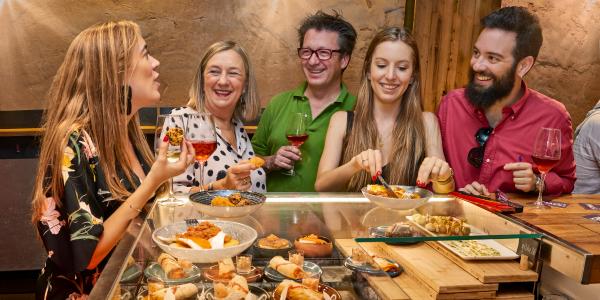
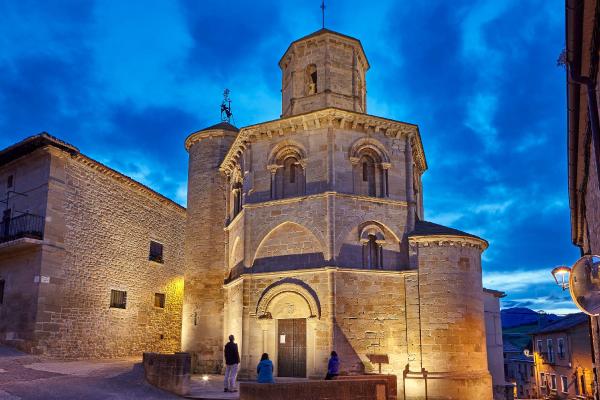
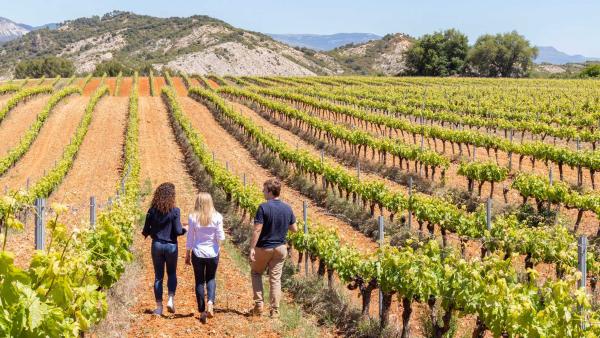
Stage 3 – Art among vineyards
From the green mountains and woods of the Pyrenees where we start the trip, the landscapes have gradually become more open, with undulating fields and woods more further apart. From Pamplona, a good option is to climb up to the El Perdón pass. From its 770-metre height we will be able to enjoy outstanding views of the path we have already covered, to the north, and of what awaits us, to the south. There, a photogenic Monument to the Camino welcomes us. You will be able to read a lovely caption on it: ‘Where the path of the wind crosses the path of the stars’.
This third part of the trip has a rich cultural heritage. Puente la Reina with its magnificent Roman bridge and its streets with their Medieval atmosphere. Not far away, standing alone in the middle of the fields, the Roman church of Santa María de Eunate, a place full of magic, where folktales, legends about knight templars and even esoteric tales mix. The next stage of the Camino takes us to Estella, Jacobean city par excellence, full of monuments like the Palace of the Kings of Navarra and San Pedro de la Rúa church. In Ayegui, we can make a stop at the Iratxe Monastery and at the intriguing wine fountain (yes, you read it right, a fountain that gushes wine 365 days a year). The churches of Santa María (Los Arcos) and of the Santo Sepulcro (Torres del Río) are other landmarks. And, finally, we reach Viana, the town in which the remains of César Borgia lie.
-
Our gastronomic proposal: And what better way to finish this stage than tasting the exquisite wines of the region? In this area of Navarra you will find many wineries at which you can enjoy wine tours that will make this last part of your trip to Navarra an unforgettable experience.



